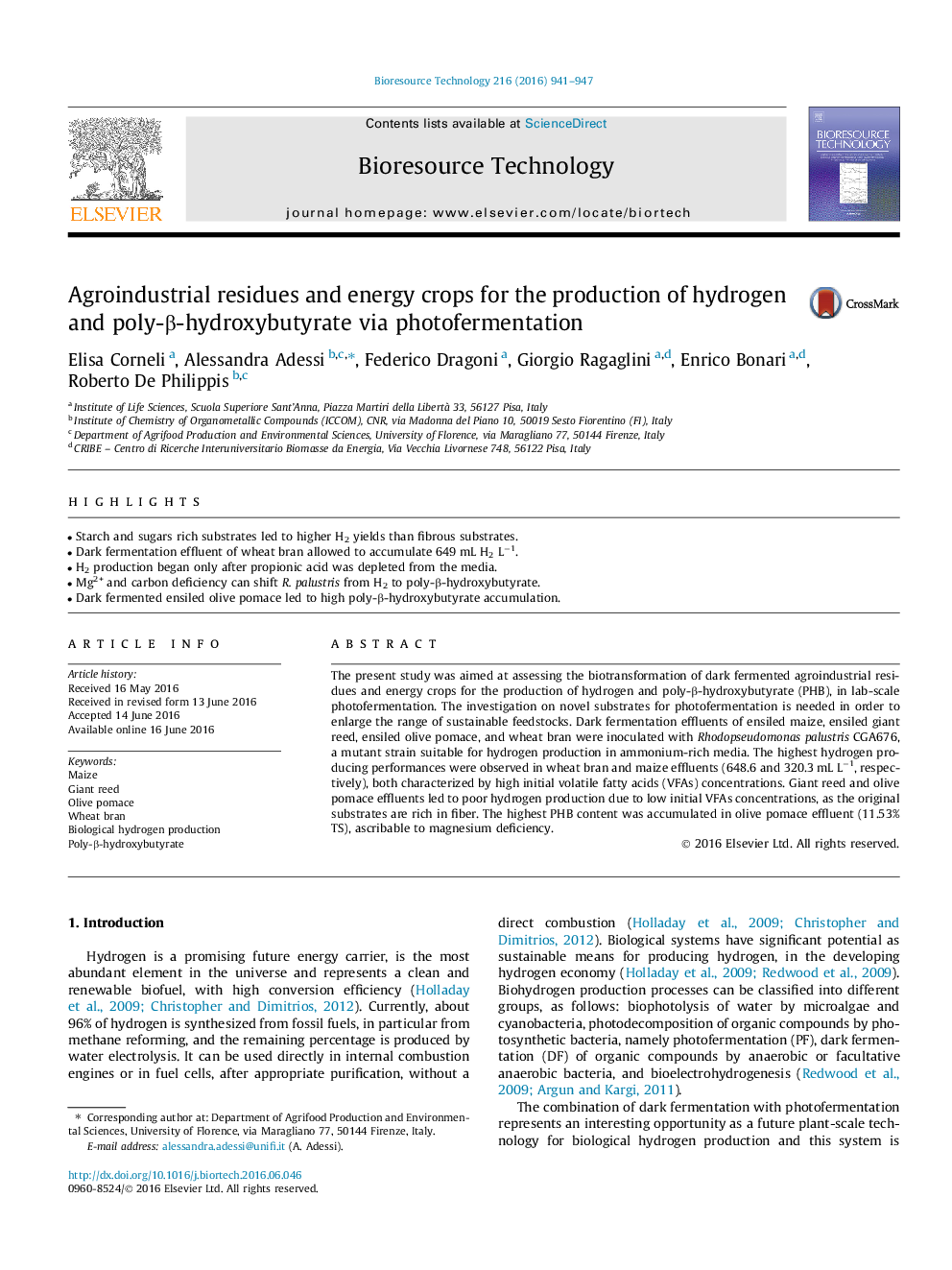| Article ID | Journal | Published Year | Pages | File Type |
|---|---|---|---|---|
| 7071010 | Bioresource Technology | 2016 | 7 Pages |
Abstract
The present study was aimed at assessing the biotransformation of dark fermented agroindustrial residues and energy crops for the production of hydrogen and poly-β-hydroxybutyrate (PHB), in lab-scale photofermentation. The investigation on novel substrates for photofermentation is needed in order to enlarge the range of sustainable feedstocks. Dark fermentation effluents of ensiled maize, ensiled giant reed, ensiled olive pomace, and wheat bran were inoculated with Rhodopseudomonas palustris CGA676, a mutant strain suitable for hydrogen production in ammonium-rich media. The highest hydrogen producing performances were observed in wheat bran and maize effluents (648.6 and 320.3 mL Lâ1, respectively), both characterized by high initial volatile fatty acids (VFAs) concentrations. Giant reed and olive pomace effluents led to poor hydrogen production due to low initial VFAs concentrations, as the original substrates are rich in fiber. The highest PHB content was accumulated in olive pomace effluent (11.53%TS), ascribable to magnesium deficiency.
Related Topics
Physical Sciences and Engineering
Chemical Engineering
Process Chemistry and Technology
Authors
Elisa Corneli, Alessandra Adessi, Federico Dragoni, Giorgio Ragaglini, Enrico Bonari, Roberto De Philippis,
